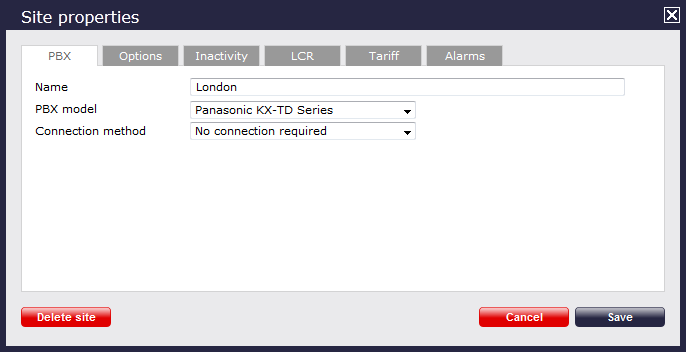These instructions help you configure your Panasonic KX-TD Series phone system to work with TIM Plus. Contact your system maintainer if you are not familiar with the configuration of your PBX.
Connection Type
Support Files
Required Tasks
Configuring your SMDR output
Follow the instructions below to configure your Panasonic KX-TD phone system to output SMDR data to TIM Plus. The configuration needs to be performed from a Digital Proprietary Telephone (DPT) such as the KX-T7431, KX-T7433, KX-T7436, KX-T7230, KX-T7235.
- Press the + + buttons simultaneously, then enter your system password.
- Enter programming mode 800 and press the button.
- Press the button to set the Outgoing option to All, then click on the button. Click .
- Press the button to set the Incoming option to All, then press the button.
- Press the button to complete the configuration.
Installing NetPBX
The Panasonic KX-TD Series phone system sends SMDR information via a serial connection. To collect the call logging data from the serial port and send it to TIM Plus, you first need to install the NetPBX software. For setup instructions, click on the link below:
Configuring TIM Plus
Once NetPBX is configured and collecting call logging data, log in to TIM Plus and perform the steps below:
- Click on the tab.
- Choose the site you want to configure and click .

- In the Site Properties window, select Panasonic KX-TD Series from the PBX model drop-down list.
- In the Connection method field, select No connection required from the drop-down list.
- Click on the button to apply the settings.